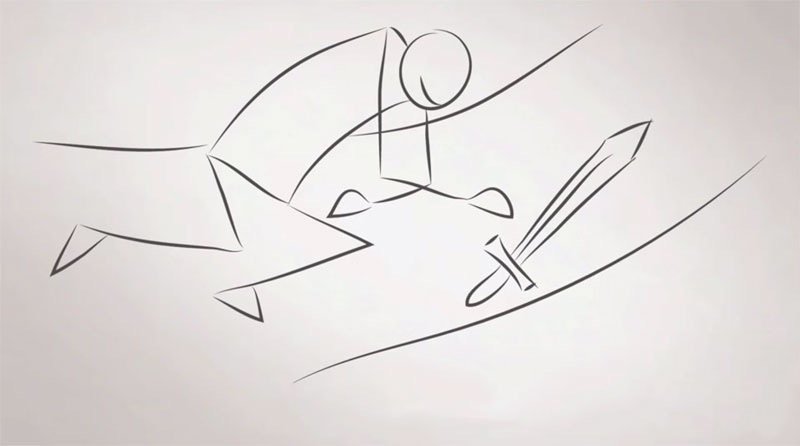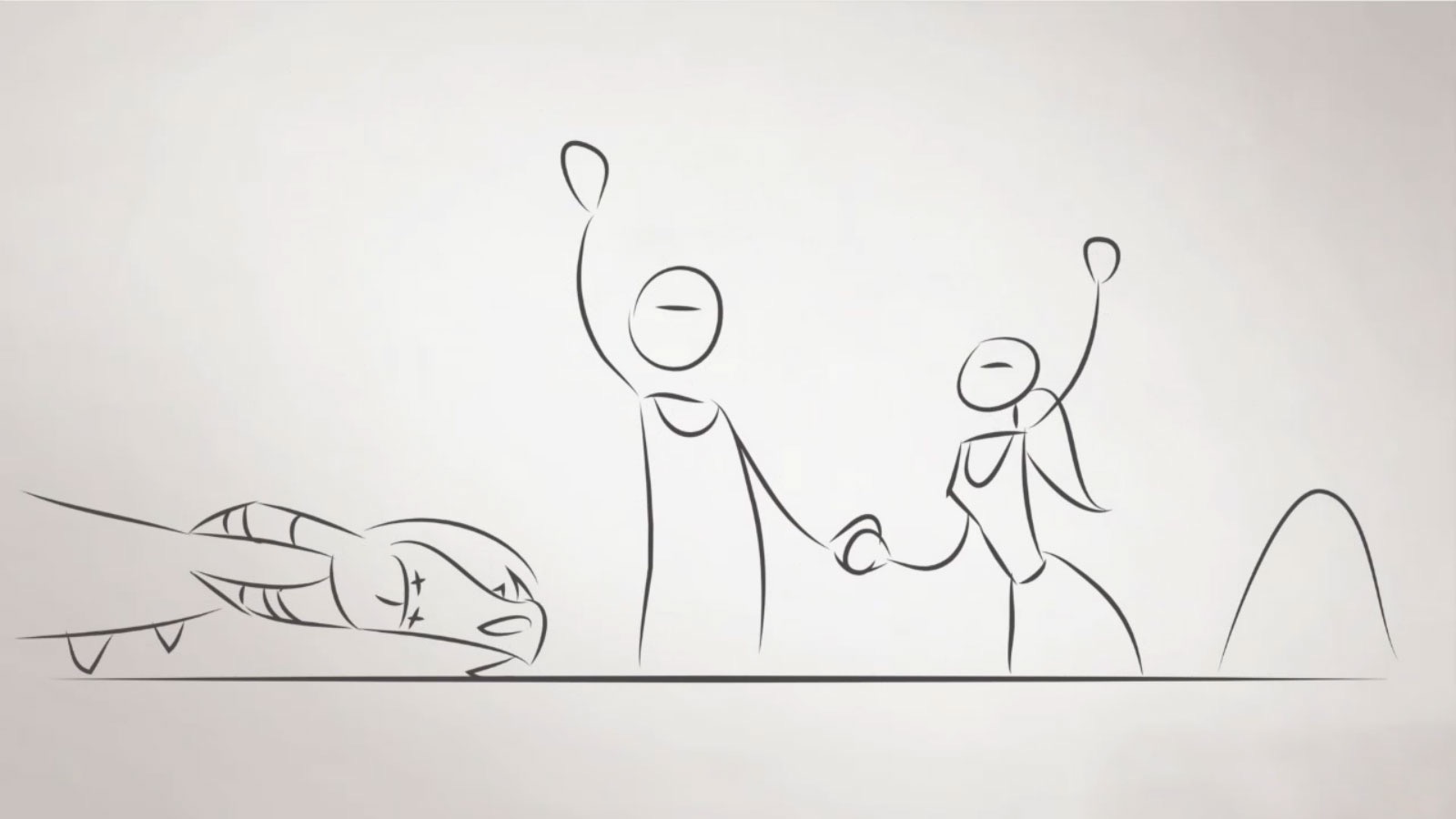Co je příběh
Příběh je jako výlet

"Napíšu poslední větu, pak větu předtím a přistihnu se, že píšu pozadu, dokud nemám jasnou představu o zvuku konce a jeho emocích. Musíte vědět, jak váš hlas na konci příběhu zní, protože pak víte, jak má znít na začátku."
— John Irving
- Akt I - Ostrá polévka - Budování - 1/4 celku
Představíme někoho, ustanovíme jeho status quo a následně ho zboříme. Proč? Aby musel vystoupit ze své zóny komfortu a jít do dobrodružství. - Akt II. - Hlavní jídlo - Dobrodružství - 1/2 celku
Ukážeme někoho, kdo se snaží dostat co chce, ale nejde mu to. Nakonec si ale uvědomí, co je potřeba udělat. - Akt III. - Dezert - Řešení - 1/4 celku
Odhalíme, zda dokázal nebo dostal to, co chtěl a tím ustanovíme jeho poslední/nový Status quo.
Ale aby bylo jasno: "Žádná pravidla nejsou pevná a trvalá"
— Cicero
Akt 1.
I. Act - The Prologue
The Prologue is the opening part of the story, designed to help you understand and empathize with the story. The Prologue also sets the mood and direction of the story and can explain more complex aspects that are important to understanding the plot.

I. Act - The Status Quo
The Status Quo refers to the present in which the story takes place. It can be a source of conflict or change when characters face challenges that threaten or want to change The Status Quo. It can also just serve as a backdrop, providing context and atmosphere.

I. Act - The Exposition
The Exposition aims to provide everything needed to understand the story. Here, we will introduce the setting, the characters, and the initial situation that triggers the plot. The Exposition creates the foundation on which the story develops and gains momentum.

I. Act - The Routine Killer
The Routine Killer is an unexpected event that completely changes the ordinary course of the plot. This event takes the characters out of their routines and forces them to react to a new situation. The killer routine is a critical moment in the development of the characters as it confronts them with new challenges and shows how they cope with change.

I. Act - The Obstacle of Act I.
The Obstacle of Act I. challenges and problems create tension and show the development of the characters and their adaptation to new situations. They also reveal the motivations and decision-making processes of the characters, allowing us to empathize with their situations. Through them, you can communicate more profound ideas and messages.

I. Act - The Decision to Proceed
The Decision to Proceed is a crucial moment of character deepening, during which changes in the characters' thinking are revealed. This phase adds tension as we anticipate how they will make their decisions and the implications.

I. Act - The Leaving the Comfort Zone
In The Leaving the Comfort Zone, the main character overcomes his fear. This step is inspiring and motivating and suggests that while it can be scary to step out of safety, it can lead to enriching and transformative experiences.

Akt 2.
II. Act - The Beginning of the Adventure
The Beginning of the Adventure is when the main character leaves his comfort zone and enters a new environment, whether geographical or emotional. Thus, we present a new Status Quo contrasting with I. Act.

II. Act - The H-Hour
The H-Hour is when the main character faces the challenges associated with beginning an adventure for the first time. It tests whether the character can overcome obstacles and achieve their goal.

II. Act - The Twist
The Twist is when a situation or story's direction turns unexpectedly. This point changes the characters' ideas about their path to their goal, introducing new obstacles and possibilities.

II. Act - The Obstacle of Act II.
The Obstacle of Act II. is not only more significant and more complex, but this time, they are also connected to the main goal of the characters and help to show their character.

II. Act - The Breaking Point
The Breaking Point is the critical moment when a fundamental change occurs, and the plot begins to take a new direction. The characters have to deal with new realities and challenges, which helps keep the story exciting and suspenseful.

II. Act - The Crisis
The Crisis is a profoundly emotional moment. It represents the accumulation of challenges when the characters face severe problems they see no way out. This situation often occurs after a breaking point. The results of the crisis are crucial to the further development of the story and the characters.

II. Act - The Aha! Moment
The Aha! Moment is the point at which the characters reach a vital insight or find the key to solving their problem. It is an essential catalyst for the characters to continue their journey into the third act.

Akt 3.
III. Act - The Path to Climax
The Path to Climax logically leads to the story's climax, and, like the beginning of the adventure, it is the moment when the characters enter a new environment. And it may be geological and emotional, but it's finite.

III. Act - The Climax
The Climax is the emotional peak where the characters deal with their most significant challenges and where the end of the story is decided. It is, in a way, the culmination of the pivotal conflicts in which all the critical elements of the story are revealed.

III. Act - The Story Event
The Story Event is the denouement of the plot. It is a moment that changes the fate of the characters and brings about a new state as opposed to the one at the story's beginning.

III. Act - The Aftermath
The Aftermath shows how the characters deal with the new Status Quo. It is an essential manifestation of the transformation of the characters and their lives. With Aftermath, we gain greater satisfaction and an understanding of what the story is all about.

III. Act - The Epilogue
The Epilogue is the essential final part of the story, providing an opportunity for respite and reflection on what has happened.

III. Act - The Credits
Credits provide a deeper insight into the world of the story and its creators, allowing a better understanding of the work and an appreciation of the work that went into its creation.
